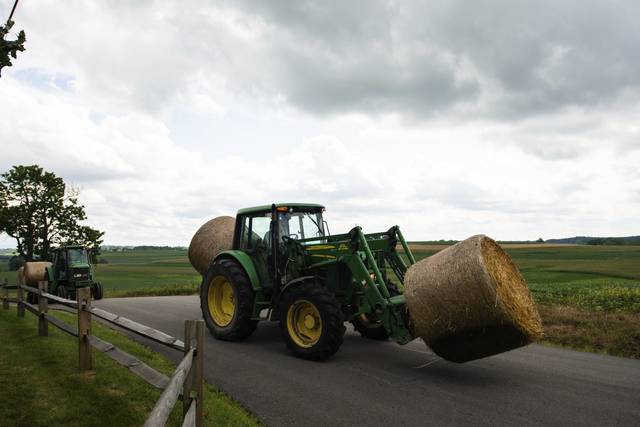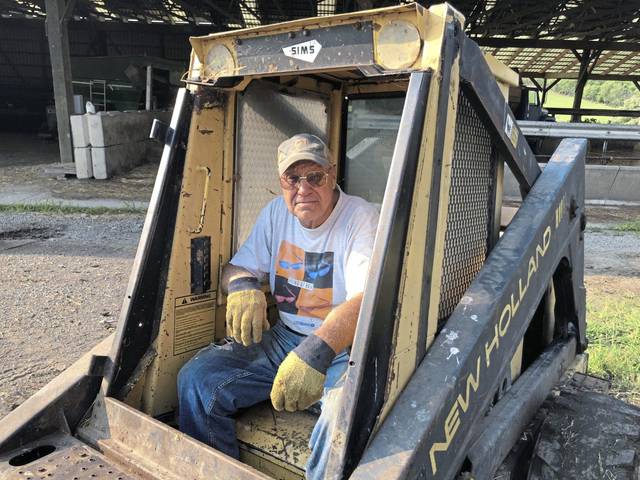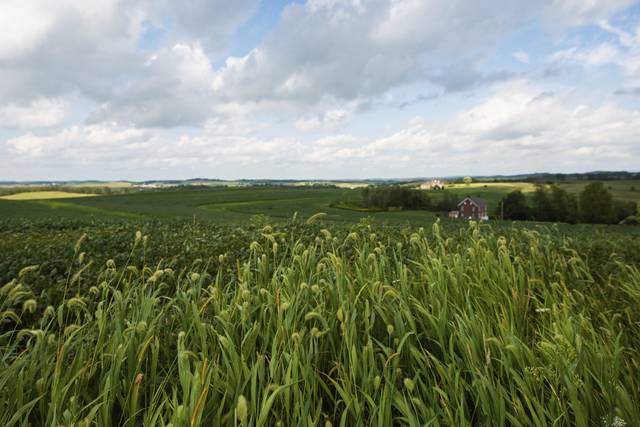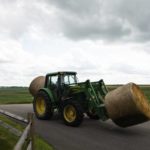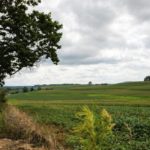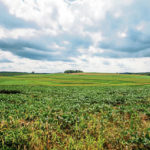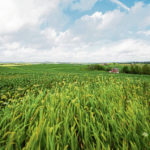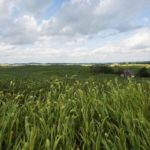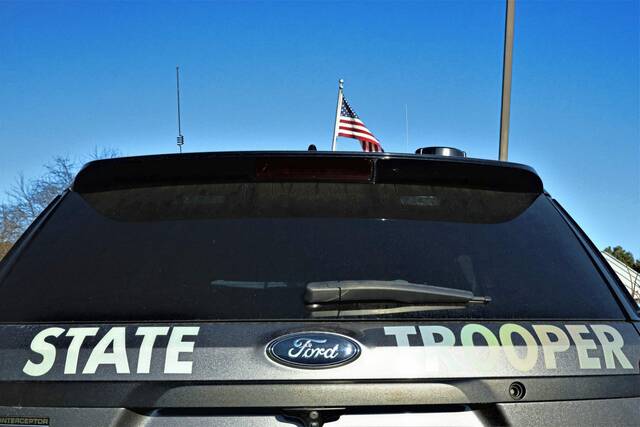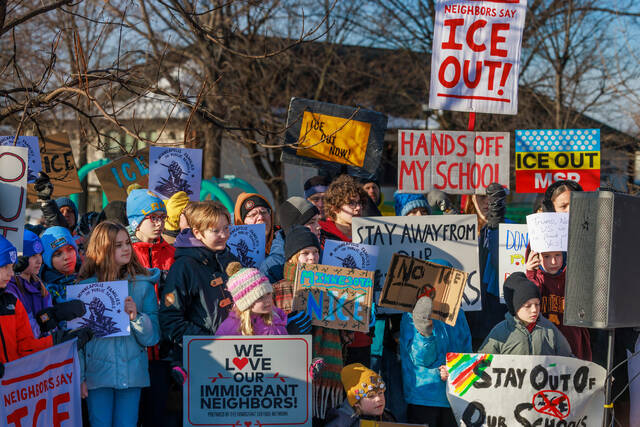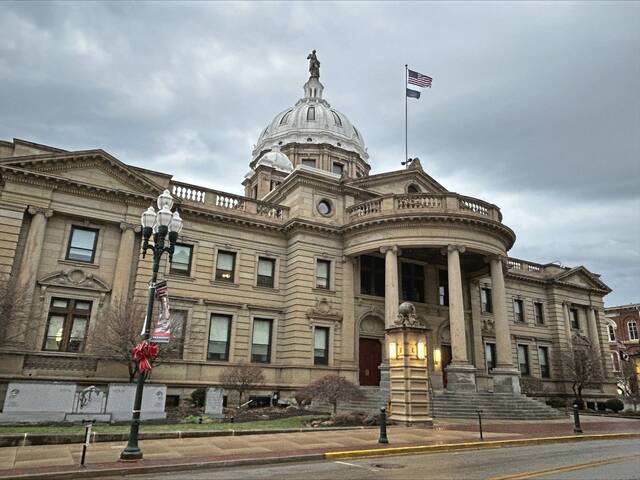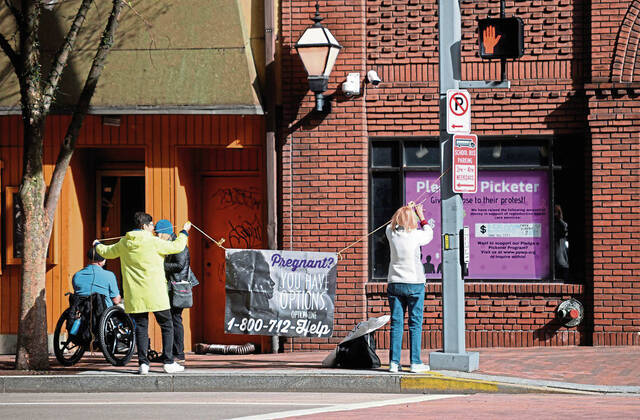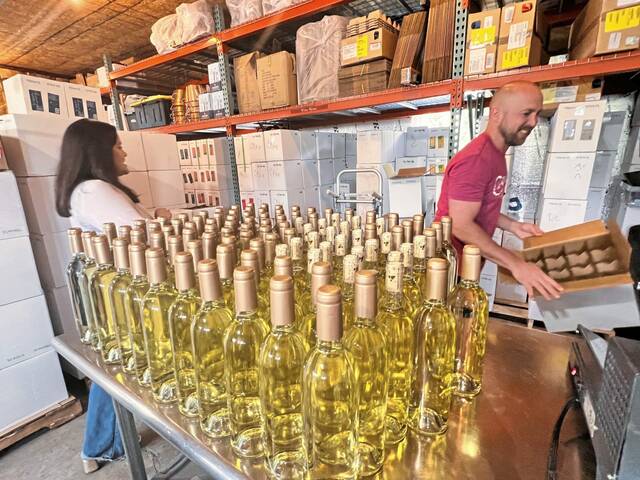Earning a living off the land has been in Alquin Heinnickel’s family since his great-grandfather came home after surviving the Battle of Gettysburg and the remainder of the Civil War to start farming in a village near New Alexandria.
About 150 years later, the Heinnickel family’s agricultural holdings will remain as farmland in perpetuity, as land development rights have been relinquished through the Westmoreland County Agricultural Land Preservation program.
“It’s preserved for generations to come. If it isn’t the Heinnickel family, it will be someone else,” said Heinnickel, while working on his farm along Route 119 in Hempfield, about six miles north of Greensburg.
The 550 acres the Heinnickel family has preserved through easements in return for payment to relinquish development rights “is the largest contiguous farmland preservation in Western Pennsylvania,” said Betty Reefer, executive director of the county’s Agricultural Land Preservation program, which was created in 1990 to conserve and protect farmlands.
“It (farmland) is one of our greatest natural resources, and we take it for granted. They don’t know it can go away,” Heinnickel said. “They’re not making anymore (land).”
David and Donna Ritenour of East Huntingdon are the latest county farmers to benefit from the agricultural preservation program. The state Agricultural Land Preservation Board recently approved a $340,902 payment to the Ritenours to protect their 120-acre crop and livestock farm along Layman Road, said Shannon Powers, an agriculture department spokeswoman.
Donna Ritenour declined to comment.
About 119 farms covering about 14,000 acres in Westmoreland County have easements placed on them to ensure the land is not developed for commercial or residential purposes, Reefer said. The county had 1,099 farms in 2017, a loss of 12 farms in five years, according to the U.S. Census data.
In Allegheny County, a similar program has preserved 38 farms and more than 3,400 acres by leveraging more than $20 million in state funds, said Jonathan Burgess, programs and policy director for the county conservation district. The program, managed by the county conservation district, expects to add two more farms in the next six months, Burgess said.
Both county programs are part of the state’s Farmland Preservation Program.
To put that much protected acreage in perspective, Burgess said it is more land than Allegheny County’s North Park and South Park combined.
The easements protect the farms in the Pittsburgh metropolitan area in a time when farming, which is hard to begin with, “has gotten more difficult,” Burgess said.
Farmers face “enormous pressure from development and land-use changes in their community,” he noted. Allegheny County has lost roughly 40% of its farms in the past 20 years. The county had 389 farms in 2017, nine less than in 2012, according to the census data.
Pressure from development, with the enticement of money, is constant, Heinnickel said, noting the golf courses and housing developments in the area that once were farms. Money farmers receive for relinquishing their development rights “equals out the value of the land,” Heinnickel said. The farmer gets paid part of the value of the land, which Heinnickel said can be worth $5,000 per acre or more, and still is able to earn money from the land, through raising crops and livestock.
“Those payments are important as farmers can pay off debt, invest in new infrastructure or equipment, or assist with the cost of generational transitions,” Burgess said.
Saving farms
The Ritenours’ farm was one of 33 covering 2,512 acres in 16 counties added to the program, at a combined cost of $9.42 million. Nearly $9 million of that comes from the state, with $540,000 from the counties and $15,000 invested by townships.
Since the program began in 1988, federal, state, county and local governments have purchased permanent easements on 5,756 Pennsylvania farms totaling 586,884 acres in 59 counties, investing more than $1.6 billion to ensure that Pennsylvania will have land to produce agriculture in the future.
About a dozen farmers statewide sought approval for the farmland preservation program in this round of funding, a process that typically takes a year, Reefer said.
East Huntingdon had designated the property, upon the Ritenours’ request, as an agriculture security area. That designation protects farms from ordinances that may render farming impractical, such as rules against noise or odors, Reefer said.
To be approved for the farmland preservation program, a review of the property is conducted that takes into account the history of farming on the land, which has to show two years of crop production and 50% of the sales that are committed to agricultural purposes. A clustering of farms in close proximity also is important, because farmers help each other, Reefer said.
A state-certified agriculture appraiser evaluates the land on a 14-point system, including factors such as the slope, the quality of the soil, the features of the land and how appealing the land is to developers.
“Each preserved farm represents a commitment to agriculture from both landowners and the government, and we hope to see it continue for years to come,” Burgess said.


